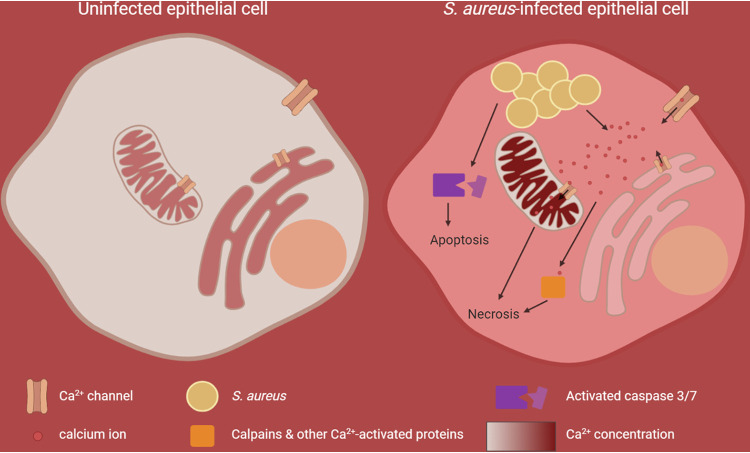FIG 8.
Graphical summary of S. aureus-induced perturbation of cellular Ca2+ homeostasis and subsequent host cell death. In uninfected epithelial cells, where the cellular Ca2+ homeostasis is not perturbed, the cytoplasmic Ca2+ concentration is 104-fold lower (approximately 100 nM) than the Ca2+ concentration in the extracellular milieu (approximately 1 mM). Intracellular organelles, like the endoplasmic reticulum (ER) and mitochondria, known as the internal Ca2+ stores, accumulate Ca2+ and thus exhibit a higher Ca2+ concentration (100 to 500 μM) compared to that of the cytoplasm. Upon S. aureus infection, calcium ions from the extracellular space and the ER are recruited to promote a cytoplasmic and subsequent mitochondrial calcium overload, which likely results in necrotic cell death. In parallel, excess stimulation of Ca2+-sensing proteins contributes to this effect. Additionally, effector caspases, which execute apoptotic cell death, are activated by intracellular S. aureus.

